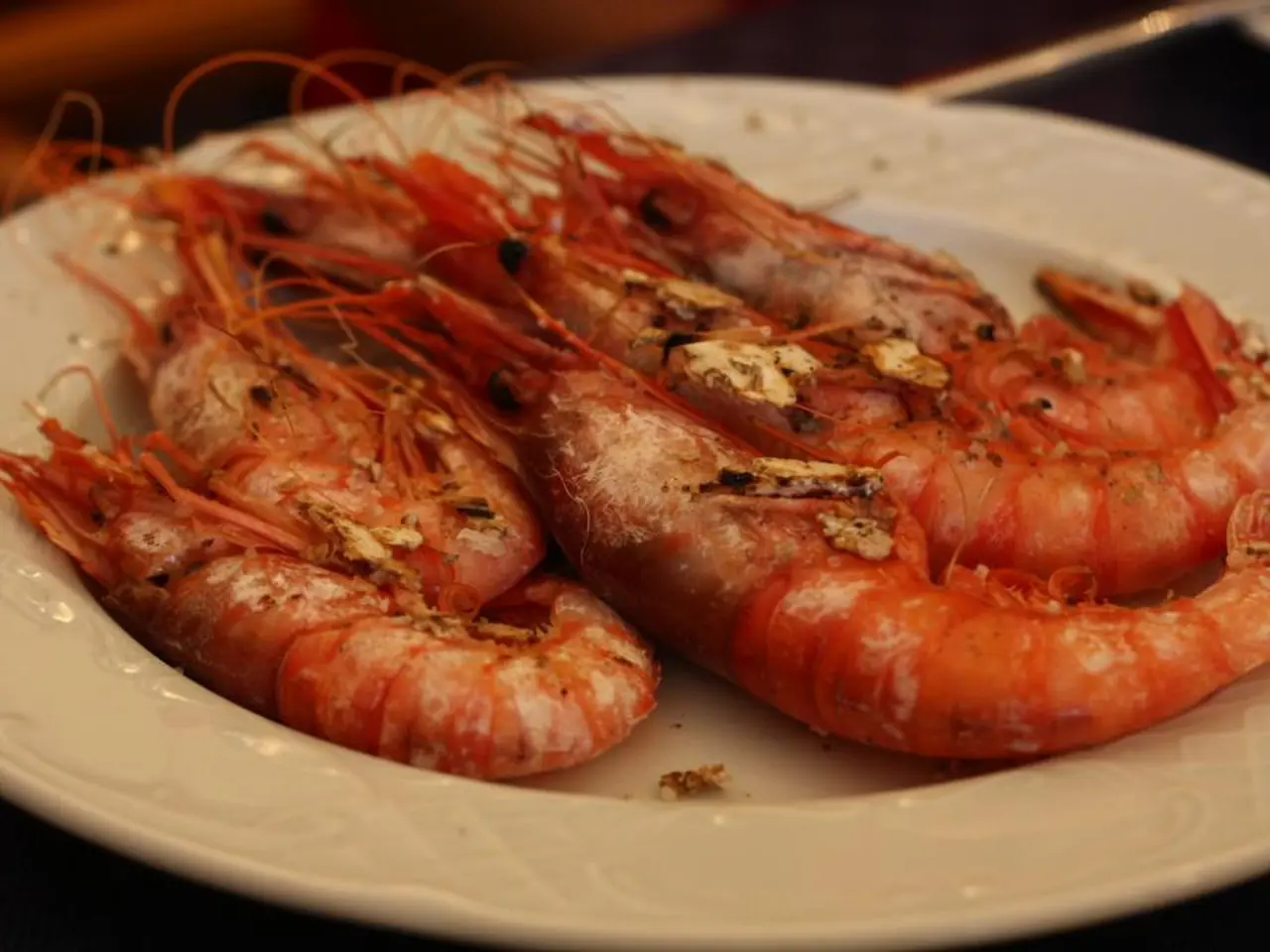Shrimp's Dark Line: Is It Excrement or Harmless? If It's the Former, Is It Risky to Consume or Merely Disgusting?
Shrimp, a popular seafood choice, is known for its versatility and nutritional benefits. But what about the black line running down the backs of shrimp? Is it safe to eat?
The black line, often referred to as the dorsal tract, back vein, or sand vein, is actually the shrimp's intestinal tract. While it is safe to consume if the shrimp is cooked thoroughly, reaching an internal temperature of 145°F, it may contain sand, grit, or waste that can cause an unpleasant texture and taste.
Many people prefer to remove the dorsal tract for a better eating experience. The process is simple and can be done with a pair of kitchen scissors. To devein a shrimp, make a shallow slit along the back of the raw shrimp with the scissors and use the tip of the scissors to pull out the dorsal tract.
Shrimp is a solid protein source, containing around 20 grams of protein in a 3-ounce serving, similar to 3 large eggs or a cup of Greek yogurt. It also provides nutrients such as iron, zinc, selenium, phosphorus, and vitamin B12. A 3-ounce serving of shrimp provides around 20% of the daily value (DV) for phosphorus and 15% of the DV for vitamin B12.
Raw shrimp can contain bacteria like E. coli, but cooking it thoroughly kills off these bacteria and other potentially harmful pathogens. However, it is safer to avoid raw dishes like sashimi and opt for cooked dishes like curry, stir-fry, garlicky pasta, or zesty tacos to reduce the risk of food poisoning.
Shrimp does not pose a threat of high mercury content compared to certain types of seafood like shark, swordfish, and bigeye tuna. But it is important to note that food poisoning risk related to shellfish typically comes from eating it raw or undercooked.
In summary, while the black line in shrimp is safe to eat if cooked thoroughly, removing it is recommended for a better culinary experience. So, whether you choose to eat it or not, remember to cook your shrimp well to ensure safety and enjoyment.
- The black line found in shrimp, known as the dorsal tract or sand vein, is its intestinal tract and may contain unwanted elements like sand, grit, or waste when consumed raw.
- If you prefer a better eating experience, you can easily remove the dorsal tract of a shrimp using a pair of kitchen scissors by making a shallow slit along the back and pulling it out.
- Shrimp is high in protein with approximately 20 grams in a 3-ounce serving, similar to 3 large eggs or a cup of Greek yogurt. It also offers essential nutrients like iron, zinc, selenium, phosphorus, and vitamin B12.
- Prior to consumption, it is crucial to cook shrimp thoroughly at an internal temperature of 145°F to eliminate harmful bacteria like E. coli and other pathogens.
- To reduce the risk of food poisoning, particularly from raw dishes like sashimi, it is advisable to stick to cooked dishes such as curry, stir-fry, garlicky pasta, or zesty tacos.
- Shrimp has a lower mercury content compared to certain seafood like shark, swordfish, and bigeye tuna but the food poisoning risk is primarily associated with eating it raw or undercooked.
- To ensure the safety and enjoyment of your shrimp-based dishes, make sure to cook the shrimp thoroughly while considering removing the black line for a superior culinary experience. Wrap up your healthy-cooking practices alongside your broader lifestyle choices for overall food-and-drink wellness and fitness-and-exercise.




